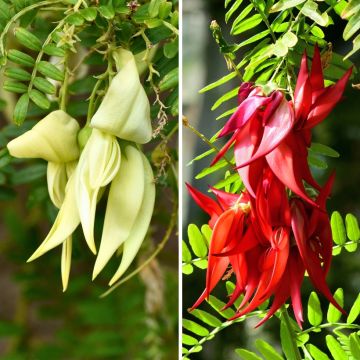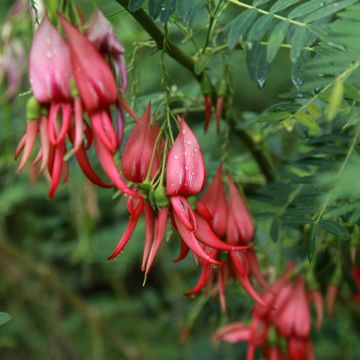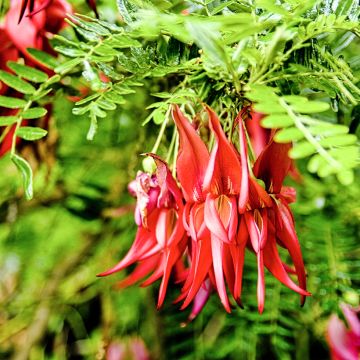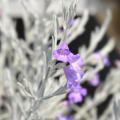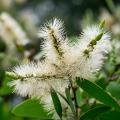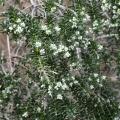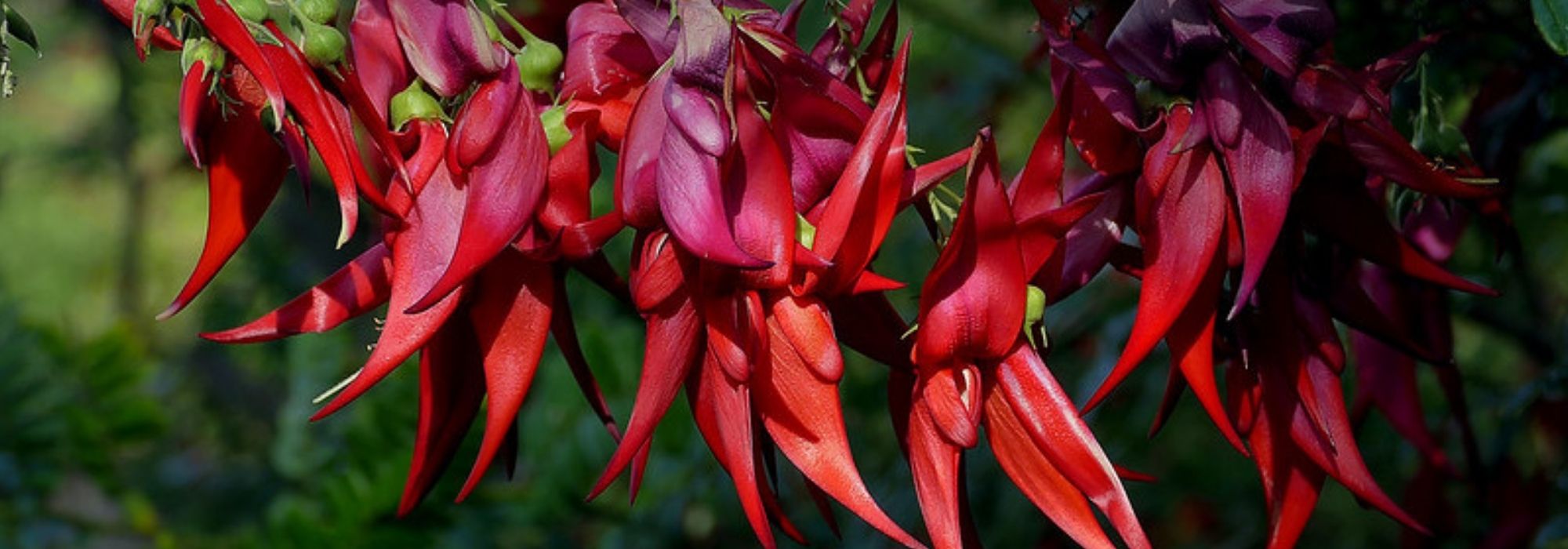Clianthus - Kakabeak
Would this plant suit my garden? Set up your Plantfit profile →
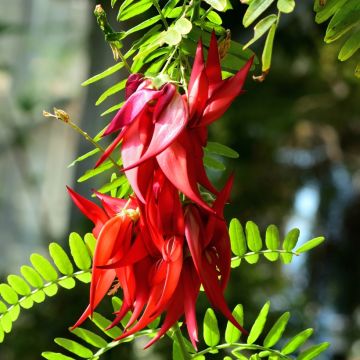
Available in 1 sizes
Available in 0 sizes

Available in 1 sizes
Available in 1 sizes
Available in 1 sizes
The Clianthus puniceus (synonym Donia punicea) or "Lobster Claw" belongs to the Fabaceae family, formerly known as legumes. Like all members of this family, this bush is capable of fixing nitrogen at its roots for its own benefit, giving it excellent adaptation to poor soils. It is native to New Zealand, where it is commonly called 'Kakabeak'. Hardy down to about -7°C (19°F) in well-drained soil and a sheltered location, Clianthus can tolerate a wide range of soils, even alkaline, as long as they remain sufficiently moist in summer. With rather fast growth, these bushes quickly form a tall and wide bushy mass of over 2 m (7 ft). The compound leaves with numerous small regular leaflets, pale green to green-grey, with silky undersides, persist in winter in mild climates or in cold greenhouses. Flowering occurs as clusters of large red or white flowers, in the shape of a "lobster claw", generally appearing from March to May, but sometimes until September depending on the climate. Clianthus puniceus will be perfect as a standalone bush, integrated into an exotic setting in a mild climate. Its low hardiness only allows cultivation in the ground in zone 9 and in a sheltered location. But gardeners in more continental areas can grow it in a large pot to overwinter in a cool and very bright place.
Haven't found what you were looking for?





































